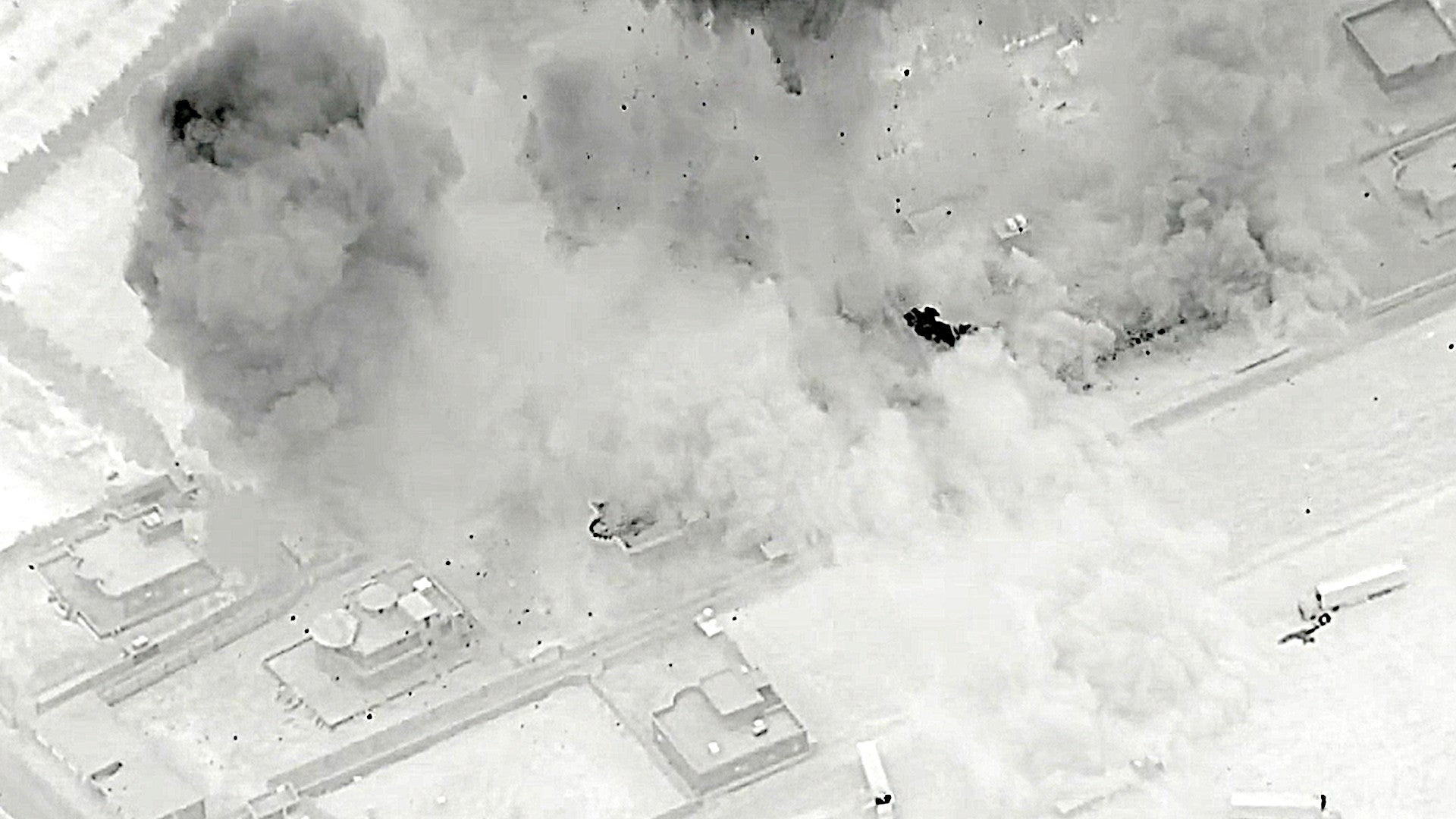The U.S. military has released footage of airstrikes on three separate sites operated by Iranian-backed militias along the Iraqi-Syrian border. These strikes, which President Joe Biden ordered, primarily targeted these groups’ growing unmanned aircraft capabilities and follow an increasing number of drone attacks on bases in Iraq that host American personnel in recent months.
U.S. Central Command (CENTCOM) posted the trio of videos online on June 28, 2021, the day after the strikes occurred. All three of the sites struck by American warplanes were in the general vicinity of the town of Al Bukamal in Syria and Al-Qa’im, immediately opposite it on the Iraqi side of the border. The Pentagon had also named Kata’ib Hezbollah and Kata’ib Sayyid al-Shuhada, specifically, as being among “several Iran-backed militia groups” that utilized these facilities.
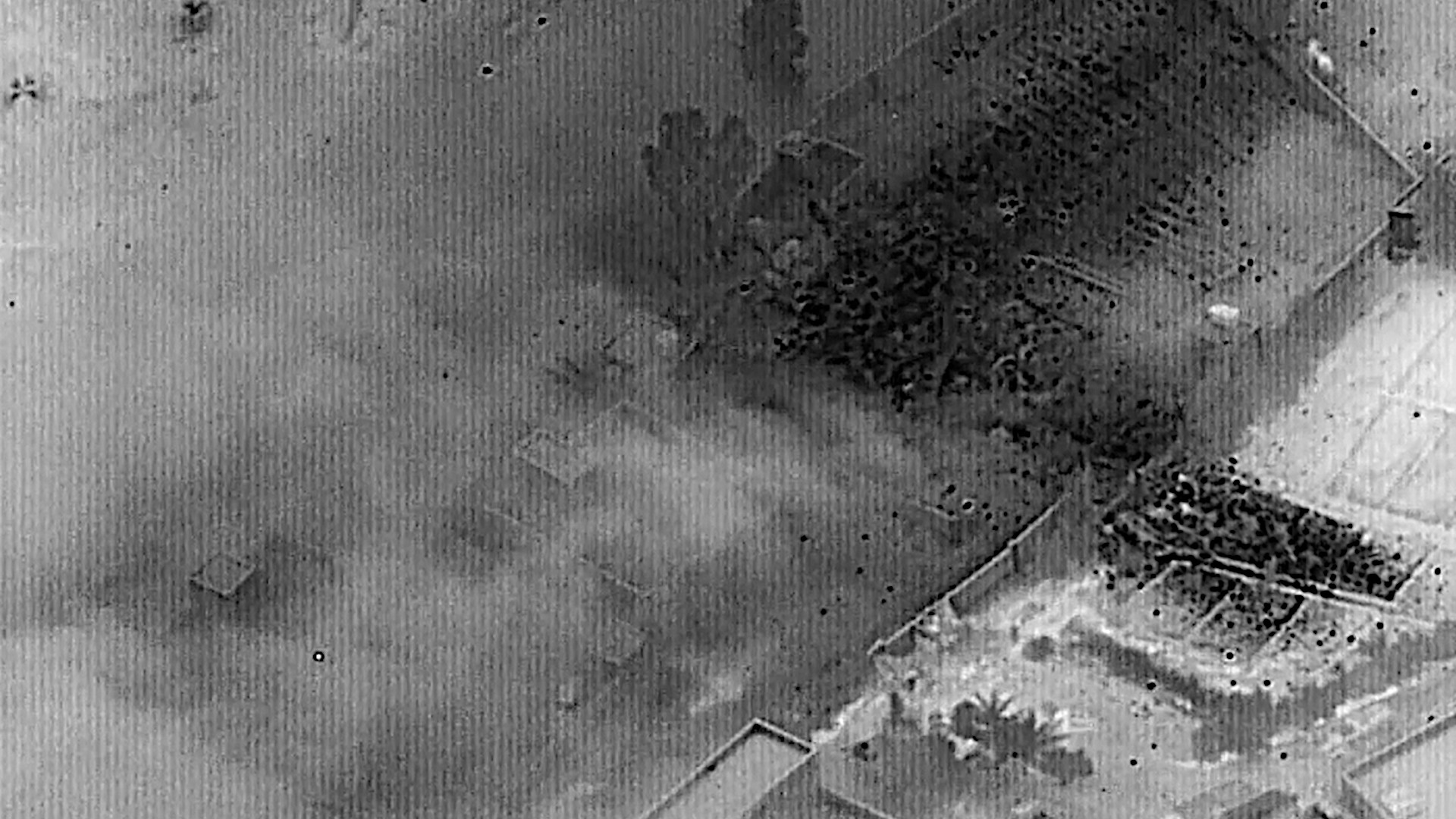
“We took necessary, appropriate, deliberate action that is designed to limit the risk of escalation, but also to send a clear and unambiguous deterrent message,” U.S. Secretary of State Antony Blinken told reporters at a press conference in Rome, where he is conducting an official visit, today.



“The targets were selected because these facilities are utilized by Iran-backed militias that are engaged in unmanned aerial vehicle (UAV) attacks against U.S. personnel and facilities in Iraq,” Pentagon Press Secretary John Kirby had said in an earlier statement. “As demonstrated by this evening’s strikes, President Biden has been clear that he will act to protect U.S. personnel. Given the ongoing series of attacks by Iran-backed groups targeting U.S. interests in Iraq, the President directed further military action to disrupt and deter such attacks.”
Al Bukamal and Al-Qa’im also together form an extremely strategic crossing point between the two countries. Biden had previously ordered strikes on other targets linked to Kait’ib Hezbollah and Kait’ib Sayyid al-Shuhada, among others, in this same general area in February, the first such strikes of his presidency. This was in retaliation for the death of a U.S. contractor in a rocket attack on Erbil International Airport in northern Iraq earlier that month. Kait’ib Hezbollah has been the target of other American airstrikes in recent years, as well.
All three of the videos are labeled as having occurred in Syria, but only two of the sites, one identified by CENTCOM as Al Hury and another as As Sisak, are in that country. A third, which CENTCOM identified as Qasabat, also written as Qasaabat, is in Iraq, south of Al-Qa’im. This appears to be a simple error since Pentagon Press Secretary Kirby’s initial statement had said that the strikes were on “two locations in Syria and one location in Iraq.”

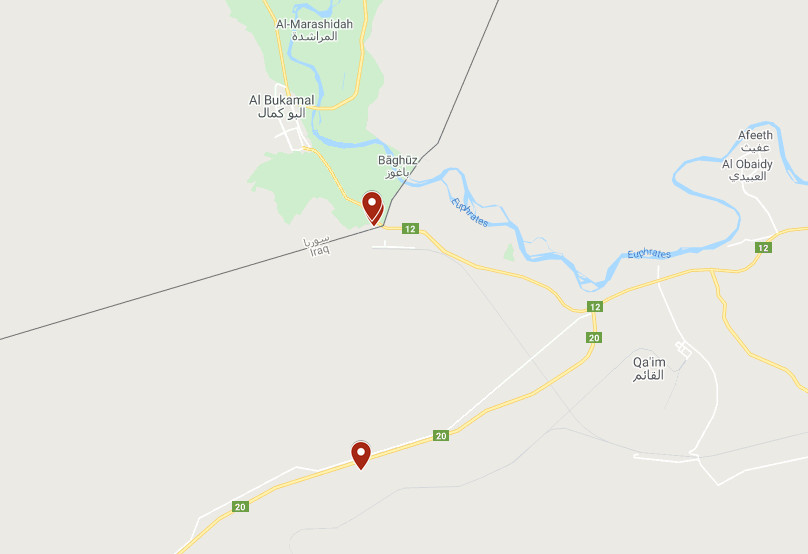
CENTCOM said that the site at Al Hury was “a facility used by Iran-backed militia groups for logistical support and transfer of advanced conventional weapons including unmanned aerial vehicles,” while the one at As Sisak was “a facility used by Iran-backed militia groups as a coordination center for the shipment and transfer of advanced conventional weapons.” The target in Qasabat was “a facility used by Iran-backed militia groups for operations, planning, and storage of unmanned aerial vehicles.”
In the past, the term “advanced conventional weapons” has been used as a catchall for, among other things, shoulder-fired surface-to-air missiles, also known as Man-Portable Air Defense Systems (MANPADS), as well as other kinds of missiles and precision-guided munitions, advanced sensors and lasers, and “heavy military equipment,” such as tanks and aircraft, according to the U.S. State Department.
U.S. Air Force F-15E Strike Eagle combat jets conducted the strikes on the targets in Syria, while that service’s F-16CM Viper fighters carried out the strikes on the facility in Iraq. The U.S. military does not currently have combat jets of any kind based in Iraq itself. The F-15Es almost certainly came from the contingent based in neighboring Jordan, which have been used to conduct these kinds of strikes in the region in the past. There are presently F-16s deployed to Al Dhafra Air Base in the United Arab Emirates, as well as at Prince Sultan Air Base in Saudi Arabia, either of which could have been involved in this operation.
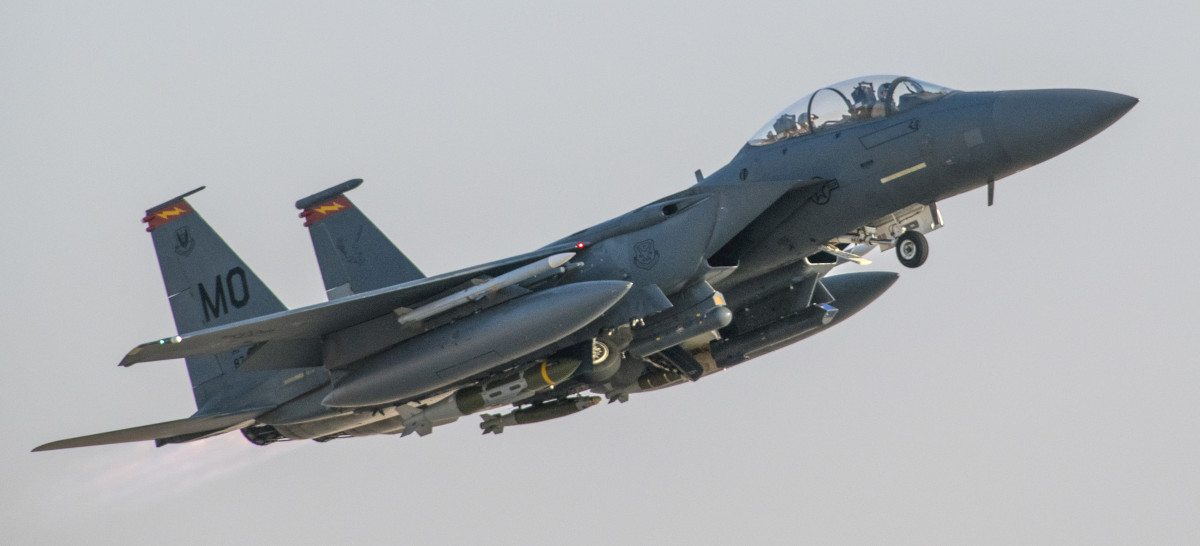
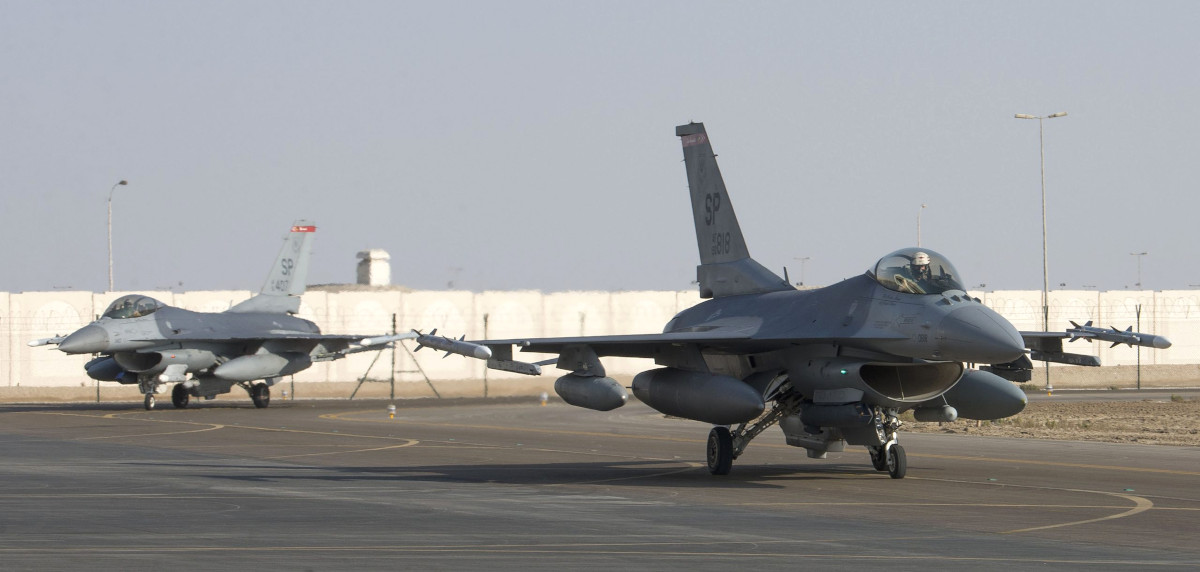
The Coordinating Committee of the Iraqi Resistance, an umbrella organization of Shiite Muslim militias in the country, many of which receive direct support from Iran, said in a statement that there had been casualties as a result of the strikes, but did not elaborate. The Pentagon said that it did not assess that there had been any civilian casualties, but did not offer any details about casualties or materiel losses inflicted on the targeted groups.
The Pentagon did not specify any particular drone attacks by Iranian-supported militias that these strikes were in response to, but there have been a number of such incidents in the past few months. These include two separate attacks in May that caused damage to buildings at Al Asad Air Base and Erbil International Airport. The target in the latter case reportedly was, and may still be, being used by the Central Intelligence Agency (CIA).
Erbil is known to be a launchpad for U.S. operations tied to the CIA, as well as the U.S. military secretive Joint Special Operations Command (JSOC). Both of these locations were also targets of the infamous Iranian ballistic missile strikes in January 2020, which were in direct retaliation for a U.S. drone strike that killed General Qassem Soleimani, then the head of the Quds Force. The Quds Force is the part of Iran’s Islamic Revolutionary Corps tasked with operations outside of the country, including supporting foreign proxy forces, such as militia groups in Iraq.
Just this Saturday, June 26, there was another reported drone attack in Erbil. Pictures emerged afterward reportedly of components recovered afterward of at least one drone that had been employed in that incident, showing a relatively small, fixed-wing design.
That incident occurred on the same day that militias belonging to the Popular Mobilization Forces (PMF), a nominally Iraqi government-controlled umbrella organization that included a number of Iranian-backed groups, including Kata’ib Hezbollah and Kata’ib Sayyid al-Shuhada, held a major parade in Baghdad. A number of unmanned aircraft were displayed at that event that appeared to be either of Iranian origin or that had significant similarities to Iranian designs, including larger types capable of dropping small, precision-guided munitions. Drone have been a feature at other parades by PMF elements, which are also referred to as Popular Mobilization Units (PMU), as well.
It remains unclear if these were operational drones or mockups, but they certainly do represent a level of very real capability that Iran and its proxies have already demonstrated during attacks, including on U.S. supported groups and their American advisors in Syria, in the past.
The groups within the PMF have been publicly and at times violently at odds with the central government in Iraq, as well as the United States and other foreign forces, and their increasingly advanced military capabilities have long been a cause for concern, in general. The uptick in drone attacks linked to these militias has also been a prime example of the very threat posed by even low-tier, commercial-grade unmanned aircraft, which can be readily modified to drop improvised munitions or otherwise carry explosive charges or other payloads. U.S. Marine Corps General Frank McKenzie, head of CENTCOM, has been sounding the alarm, as have others, including us here at The War Zone, about this reality, and the low barrier for entry when it comes to groups looking to pursue unmanned aircraft capabilities, for years now.
“These small- and medium-sized UAS [unmanned aircraft systems] proliferating across the [area of operations] present a new and complex threat to our forces and those of our partners and allies,” McKenzie told members of Congress at a hearing in April. “For the first time since the Korean War, we are operating without complete air superiority.”
Iranian-backed militias carrying out drone strikes targeting U.S. personnel and American retaliatory strikes against those groups also underscore the complex geopolitical situation facing the government in Iraq, which has long attempted to straddle both sides. A statement from Iraq’s armed forces slammed the latest American strikes as “a blatant and unacceptable violation of Iraqi sovereignty and Iraqi national security in accordance with all international conventions.”
At the same time, “Iraq renews its refusal to be an arena for settling accounts, and clings to its right to sovereignty over its lands, and prevents it from being used as an arena for reactions and attacks,” that statement added, which could be seen as seeking to place blame on both sides. “We call for calm and avoiding escalation in all its forms, stressing that Iraq will carry out the necessary investigations, procedures and contacts at various levels to prevent such violations.”
In March, it had been reported that Iranian-backed militias had offered to cease attacks aimed at American forces if Iraqi Prime Minister Mustafa Al Kadhimi would make a formal and public demand for their complete withdrawal. In April, the two countries issued a statement that included a commitment to the eventual withdrawal of U.S. combat troops from the country, but did not set any specific timeline or promise the departure of all American forces.
All of this comes as the United States and Iran appear to be in a stalemate over the former’s return to a controversial international deal over the nuclear ambitions of the regime in Tehran. Since President Donald Trump pulled the U.S. government out of that agreement in 2018, Iranian authorities have violated all of its key provisions.
In addition, earlier this month, Ebrahim Raisi, a hardliner close to Iran’s Supreme Leader Ayatollah Ali Khamenei, won the country’s latest presidential election, which the U.S. derided as neither free nor fair. This has raised concerns about a potential further spike in tensions between the two countries. There has notably been an uptick in altercations between U.S. and Iranian military vessels in the Persian Gulf this year, as well, including two instances where American patrol boats fired warning shots.
With regards to the strikes in Iraq and Syria, it remains to be seen just how significant an impact they may have actually had on the ability of Iranian-backed groups to launch drone strikes at American interests in the region. Only time will tell how those militias, who continue to expand their military capabilities and use them to target American interests, as well as their benefactors in Tehran, will receive the broader message the U.S. government says it trying to send.
UPDATE: 4:15 PM EST —
U.S. forces at an unspecified location in Syria were subjected to a rocket attack today, according to U.S. Army Colonel Wayne Marotto, the top spokesperson for the U.S.-led coalition fighting ISIS in that country, as well as Iraq. “There are no injuries and damage is being assessed,” he wrote in a Tweet. Video footage purporting to show Iranian-backed militias launching the rockets has also emerged on social media, and the clear suggestion is that this was in response to the American airstrikes yesterday.
In addition, Saraya Awliya Al Dam, or the Avengers of Blood Companies, another Iranian-backed militant group in the region, has threatened to at least try to start shooting down U.S. military aircraft flying over Iraq. Saraya Awliya Al Dam had claimed responsibility for the rocket attack on Erbil International Airport that killed the U.S. contractor in February, which, in turn, had prompted American airstrikes along the Iraq-Syria border.
UPDATE: 4:45 PM EST —
U.S. Army Colonel Wayne Marotto has added an update to his previous statement, saying that the U.S. forces in Syria that came under rocket attack “acted in self-defense” and returned fire with unspecified artillery.
Contact the author: joe@thedrive.com
